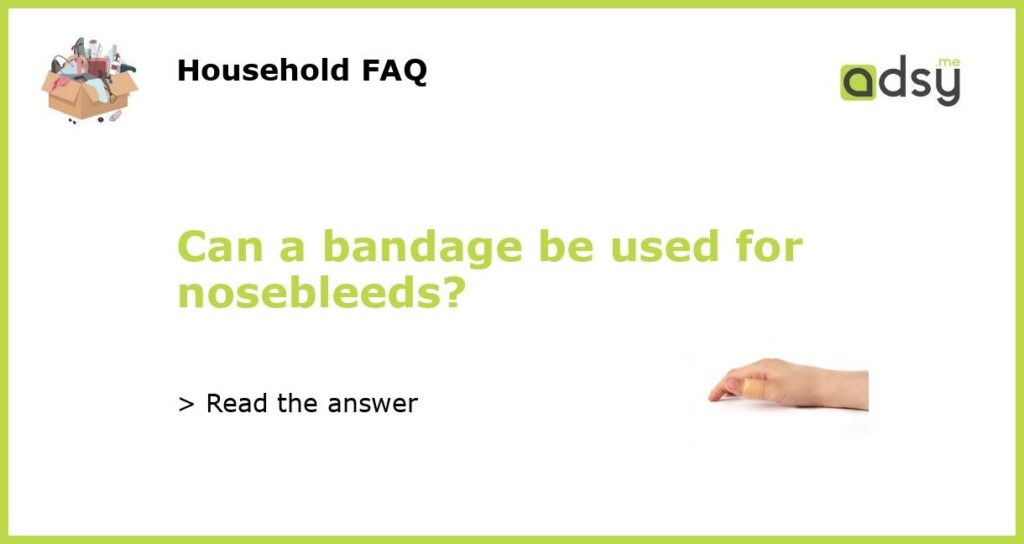Yes, a bandage can be used for nosebleeds
Nosebleeds are a common issue that many people face. While some nosebleeds can be minor and stop on their own, others can be more severe and difficult to control. In such cases, it may be necessary to use a bandage to help stop the bleeding.
How to use a bandage for nosebleeds
Using a bandage for nosebleeds involves a few simple steps. Firstly, you need to tilt your head forward and pinch your nostrils closed with your fingers. This helps to stop the blood flow and prevent it from running down the back of your throat. Then, take a small piece of gauze or cotton wool and roll it up into a thin cylinder shape. Place this inside the nostril that is bleeding and hold it in place using a bandage. Make sure the bandage is not too tight and does not cut off your breathing.
When to seek medical attention
If you experience frequent nosebleeds or if the bleeding does not stop after applying a bandage, it is important to seek medical attention. In some cases, nosebleeds can be a sign of an underlying health condition, such as high blood pressure or a blood clotting disorder. Your doctor will be able to diagnose the cause of your nosebleeds and provide appropriate treatment.
Preventing nosebleeds
It is always better to prevent nosebleeds than to have to treat them. There are several ways to prevent nosebleeds, including:
- Avoiding picking your nose
- Using a humidifier to keep the air moist
- Avoiding hot and spicy foods that can irritate the lining of your nose
- Avoiding medications that can thin your blood, such as aspirin or ibuprofen
In conclusion
A bandage can be a useful tool in stopping nosebleeds, but it should only be used as a temporary measure. If you experience frequent nosebleeds or if the bleeding does not stop after applying a bandage, it is important to seek medical attention. Preventing nosebleeds is always better than having to treat them, so make sure to follow the prevention tips above to reduce your risk.






